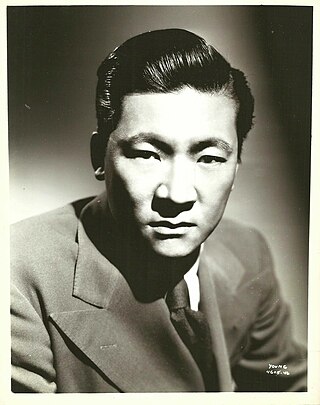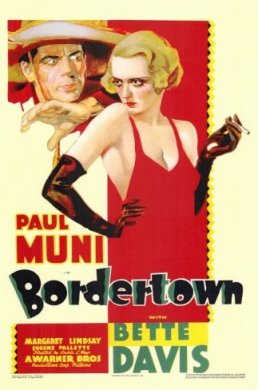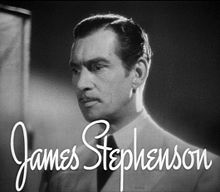
Dark Victory is a 1939 American melodrama film directed by Edmund Goulding, starring Bette Davis, and featuring George Brent, Humphrey Bogart, Geraldine Fitzgerald, Ronald Reagan, Henry Travers, and Cora Witherspoon. The screenplay by Casey Robinson was based on the 1934 play of the same title by George Brewer and Bertram Bloch, starring Tallulah Bankhead.

William Wyler was a German-born American film director and producer. Known for his work in numerous genres over five decades, he received numerous awards and accolades, including three Academy Awards. He holds the record of twelve nominations for the Academy Award for Best Director. For his oeuvre of work, Wyler was awarded the Irving G. Thalberg Memorial Award, the Directors Guild of America Lifetime Achievement Award, and the American Film Institute Life Achievement Award.

Ruth Elizabeth "Bette" Davis was an American actress of film, television and theater. Regarded as one of the greatest actresses in Hollywood history, she was noted for her willingness to play unsympathetic, sardonic characters and was known for her performances in a range of film genres, from contemporary crime melodramas to historical and period films and occasional comedies, although her greatest successes were her roles in romantic dramas. She won the Academy Award for Best Actress twice, was the first person to accrue ten Academy Award nominations for acting, and was the first woman to receive a Lifetime Achievement Award from the American Film Institute. In 1999, Davis was placed second on the American Film Institute's list of the greatest female stars of classic Hollywood cinema.

The Letter is an American pre-Code dramatic film directed by Jean de Limur and released by Paramount Pictures. It was the first full-sound feature shot at Astoria Studios, Queens, New York City. A silent version of the film was also released. The film stars stage actress Jeanne Eagels in her penultimate role and O.P. Heggie. The film was adapted by Garrett Fort from the 1927 play The Letter by W. Somerset Maugham. It tells the story of a jealous married woman who kills her lover and is brought to trial.

Dangerous is a 1935 American drama film directed by Alfred E. Green and starring Bette Davis in her first Oscar-winning role. The screenplay by Laird Doyle is based on his story Hard Luck Dame.

The Private Lives of Elizabeth and Essex, for a time also entitled Elizabeth the Queen, is a 1939 American historical romantic drama film directed by Michael Curtiz and starring Bette Davis, Errol Flynn, and Olivia de Havilland. Based on the play Elizabeth the Queen by Maxwell Anderson—which had a successful run on Broadway with Lynn Fontanne and Alfred Lunt in the lead roles—the film fictionalizes the historical relationship between Queen Elizabeth I and Robert Devereux, 2nd Earl of Essex. The screenplay was written by Norman Reilly Raine and Aeneas MacKenzie.

Victor Sen Young was an American character actor, best known for playing Jimmy Chan in the Charlie Chan films and Hop Sing in the western series Bonanza. He was born in San Francisco, California to Gum Yung Sen and his first wife, both immigrants from China.

James Albert Stephenson was a British stage and film actor. He took up film acting at 49 and after a typically slow start delivered an Academy Award-nominated performance in the William Wyler-directed melodrama, The Letter in 1940. The roles offered to Stephenson dramatically improved following this performance, but he died just a year later at 52.

Bordertown is a 1935 American drama film directed by Archie Mayo and starring Paul Muni and Bette Davis. The screenplay by Laird Doyle and Wallace Smith is based on Robert Lord's adaptation of the 1934 novel Border Town by Carroll Graham. The supporting cast features Margaret Lindsay, Eugene Pallette and Robert Barrat. Although the films They Drive by Night (1940) and Blowing Wild (1953) are not specifically remakes of Bordertown, they include many of its plot elements and similar scenes.

The Letter is a 1927 play by W. Somerset Maugham, dramatised from a short story that first appeared in his 1926 collection The Casuarina Tree. The story was inspired by the real-life Ethel Proudlock case which involved the wife of the headmaster of Victoria Institution in Kuala Lumpur who was convicted in a murder trial after shooting dead a male friend in April 1911. She was eventually pardoned.

20,000 Years in Sing Sing is a 1932 American pre-Code drama film set in Sing Sing Penitentiary, the maximum security prison in Ossining, New York, starring Spencer Tracy as an inmate and Bette Davis as his girlfriend. It was directed by Michael Curtiz and based on the nonfiction book, Twenty Thousand Years in Sing Sing, written by Lewis E. Lawes, the warden of Sing Sing from 1920 to 1941.

Of Human Bondage is a 1946 American drama film directed by Edmund Goulding and starring Paul Henreid, Eleanor Parker and Alexis Smith. The second screen adaptation of W. Somerset Maugham's 1915 novel, this Warner Bros. sanitized version was written by Catherine Turney. The central characters are Philip Carey, a clubfooted medical student, and Mildred Rogers, a low-class waitress with whom he becomes obsessed.

It's Love I'm After is a 1937 American screwball comedy film directed by Archie Mayo and starring Leslie Howard, Bette Davis, and Olivia de Havilland. Based on the story "Gentlemen After Midnight" by Maurice Hanline, with a screenplay by Casey Robinson, the film is about a couple who have postponed their marriage eleven times and who continue to plot and scheme their way to marriage. The film marked the third on-screen pairing of Leslie Howard and Bette Davis, following Of Human Bondage and The Petrified Forest.

Three Strangers is a 1946 American film noir crime drama directed by Jean Negulesco and starring Sydney Greenstreet, Geraldine Fitzgerald, and Peter Lorre, and featuring Joan Lorring and Alan Napier. The screenplay was written by John Huston and Howard Koch. It was produced and distributed by Warner Brothers.

Special Agent is a 1935 American crime drama film directed by William Keighley and starring Bette Davis and George Brent. The screenplay by Laird Doyle and Abem Finkel is based on a story by Martin Mooney. The film was produced by Cosmopolitan Productions and released by Warner Bros.

The Casuarina Tree is a collection of short stories by W. Somerset Maugham, set in the Federated Malay States during the 1920s. It was first published by the UK publishing house Heinemann on September 2, 1926. The first American edition was published on September 17, 1926 by George H. Doran. It was re-published by Collins in London under the title The Letter: Stories of Crime. The book was published in French translation as Le Sortilège Malais (1928) and in Spanish as Extremo Oriente (1945).

The Little Foxes is a 1941 American drama film directed by William Wyler. The screenplay by Lillian Hellman is based on her 1939 play The Little Foxes. Hellman's ex-husband Arthur Kober, Dorothy Parker and her husband Alan Campbell contributed additional scenes and dialogue.
The Letter is an opera by composer Paul Moravec and librettist Terry Teachout. It was commissioned by the Santa Fe Opera and was premiered there on 25 July 2009.

Woman in the Jungle is a 1931 American drama film directed by Dimitri Buchowetzki and starring Charlotte Ander, Ernst Stahl-Nachbaur and Erich Ponto. It was shot at the Joinville Studios in Paris as the German-language version of The Letter. Such multiple-language versions were common during the early years of sound before dubbing became widespread. Like the original it was based on the 1927 play The Letter by W. Somerset Maugham.

Change Partners is a 1965 British crime drama directed by Robert Lynn and starring Anthony Dawson, Zena Walker and Kenneth Cope. It was made at Merton Park Studios originally as a Warner-Pathé release, prior to being included as a part of the long-running series of Edgar Wallace Mysteries.























